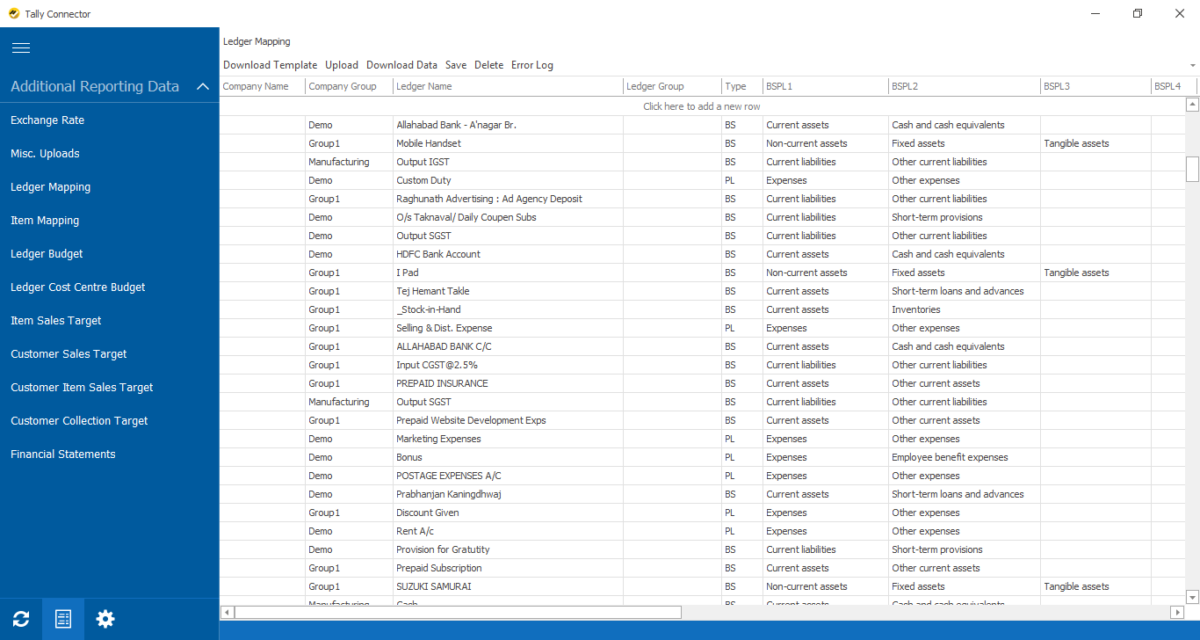September 14, 2023
In today’s data-driven world, businesses are constantly seeking ways to enhance their financial reporting processes. Consolidated financial statements, which combine the financial data of multiple subsidiaries or business units, are essential for providing a holistic view of a company’s financial health. To streamline this complex task, many organizations are turning to Business Intelligence (BI) tools. In this blog post, we’ll explore how to prepare Consolidated Financial Statements using BI tools and provide a step-by-step guide on how to do it effectively.
Steps for preparing Consolidated Financial Statements
1. Maintain mapping of the Chart of Accounts in Tally with the reporting heads
Typically, you would need to have a single or multiple chart of accounts to be mapped with the required reporting heads. In EasyReports we have an interface through which either you can upload or maintain this mapping.

2. Maintain Exchange Rates
Sometimes, you need to prepare consolidated financial statements in a currency different from the company’s currency. To do this, you must maintain the average and closing exchange rates. So that the system can convert the balance sheet and profit & loss balances into the reporting currency.
3. Create the Report Template
Every company has a different reporting format. Which may involve setting up the rows and columns of the financial statement template along with the formatting. The top sheets are then linked to the data sheets for the auto data population.
4. Data Transformation and Aggregation
For preparation of the consolidated financial statement, we may need to perform cost allocations, currency conversions, translation reserve calculations or other eliminations. These transformations and aggregations are done in EasyReports and the processed data is provided to the report template. Sometimes an entity is setup for closing entry population or adjustment entries are provided through an Excel upload.
5. Generating output data for previous period or multiple time periods
Some companies may require a comparison to the previous period or previous year-to-date figures, or they may use a monthly or quarterly columnar format. You will need to populate this data in the reporting template.
6. Final Output
The final output is then generated, and the presentation is available to the end-users for validation and use.
7. Security and Access Control
You need to setup security controls so that authorized users have access to sensitive financial information by configuring access settings within the BI tool.
8. Review and Validation
You also need to regularly review and validate the consolidated financial statements to catch errors or discrepancies. For this purpose, certain exception reports are provided. Which makes the task of reconciliation or validation of setup quick and easy.

Benefits of Using EasyReports for Consolidated Financial Statements
- Efficiency EasyReports BI helps streamline the data consolidation process. Like reducing the time and effort required for manual data entry and reconciliation.
- Accuracy Automation and data validation features in EasyReports help minimize human error in financial reporting.
- Data Exploration EasyReports allows for in-depth analysis and exploration of financial data, helping you uncover insights and trends.
- Collaboration features in EasyReports enable multiple team members to work on financial reporting simultaneously, improving teamwork and productivity.
These are the steps to prepare Consolidated Financial Statements using BI Tools. Creating consolidated financial statements is a complex yet essential task for businesses with multiple subsidiaries or business divisions. Leveraging the functionalities of EasyReports BI streamlines this process, offering benefits such as increased efficiency, improved accuracy and better data exploration capabilities. As reporting technology continues to evolve, it’s likely to become an even more integral part of financial reporting and analysis in the future.
